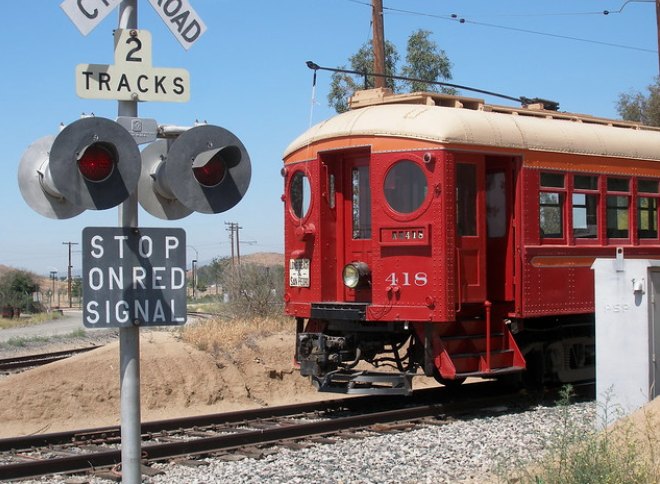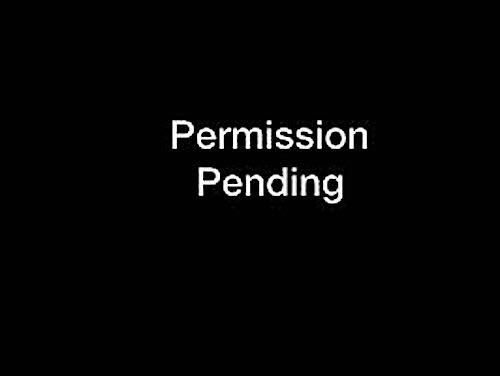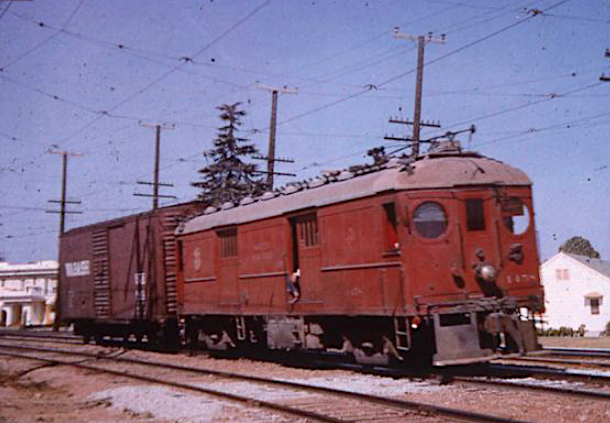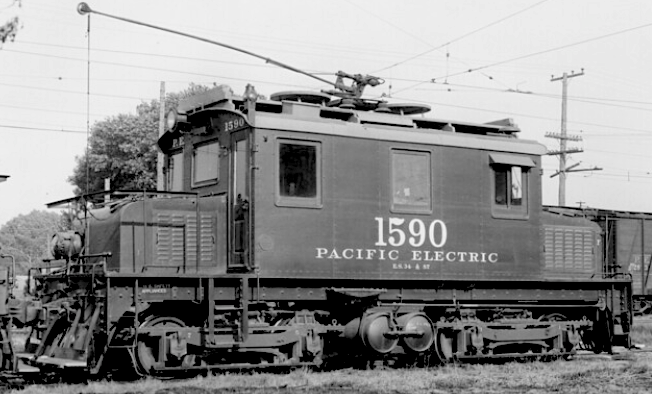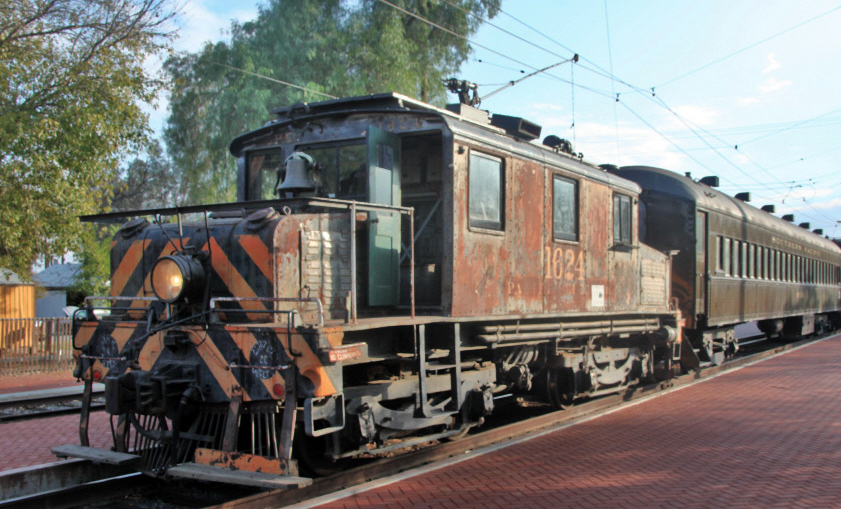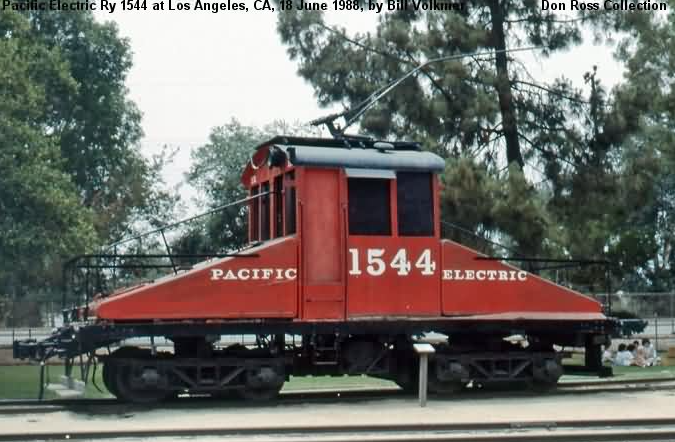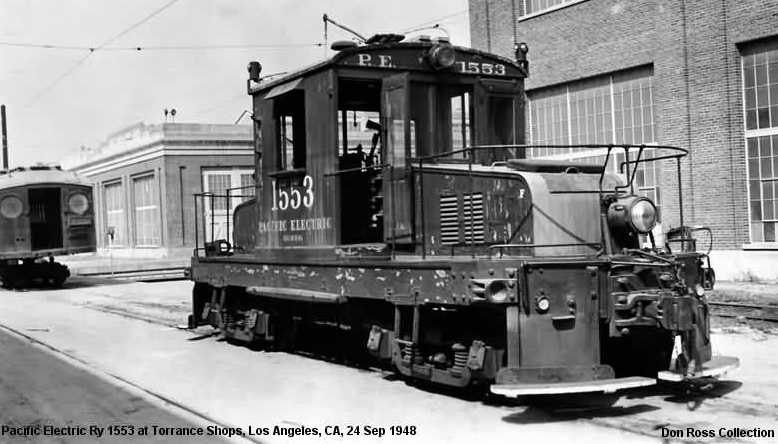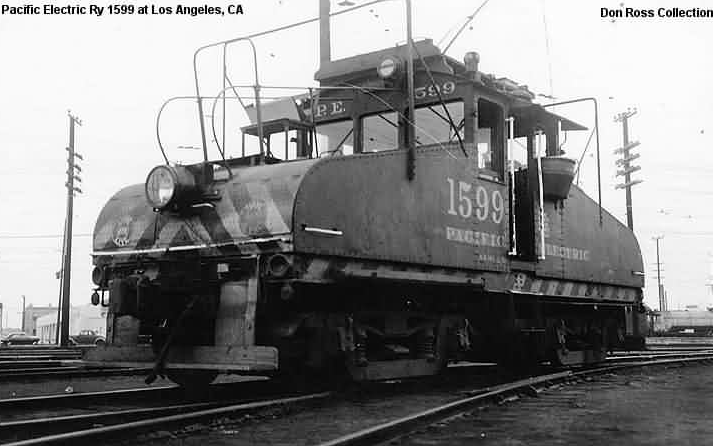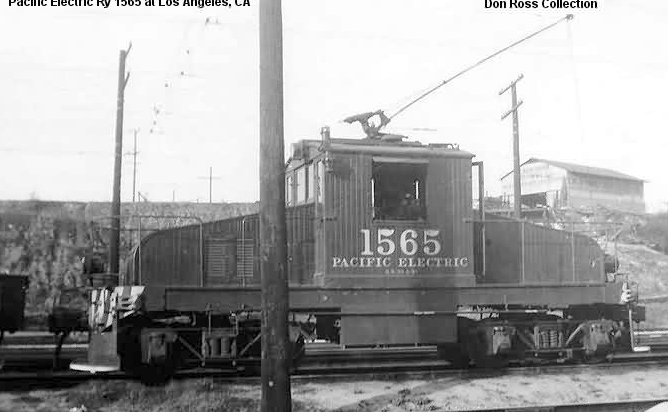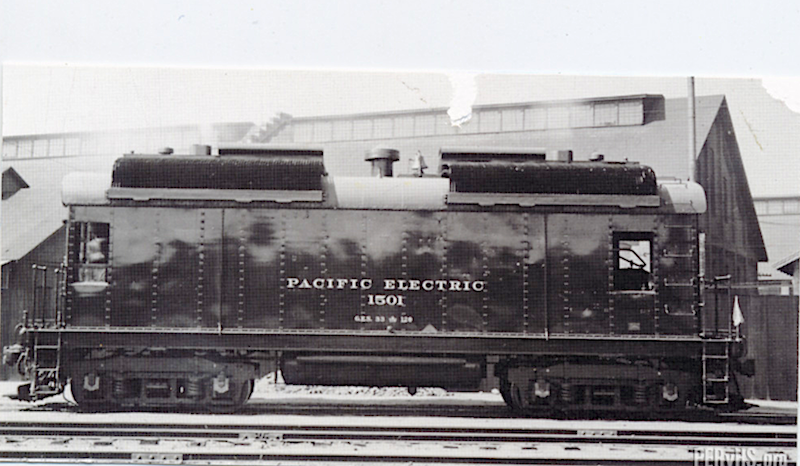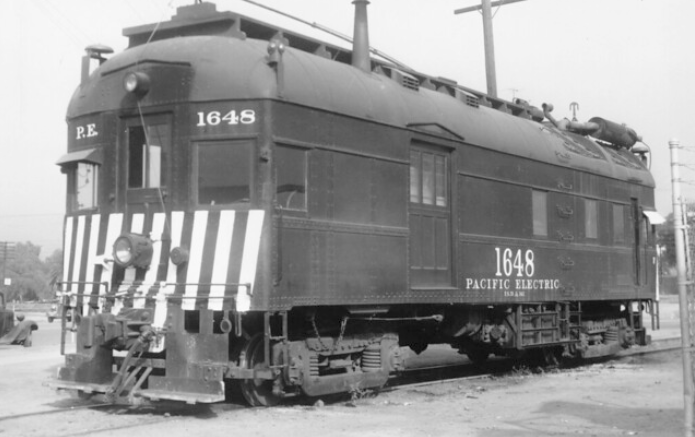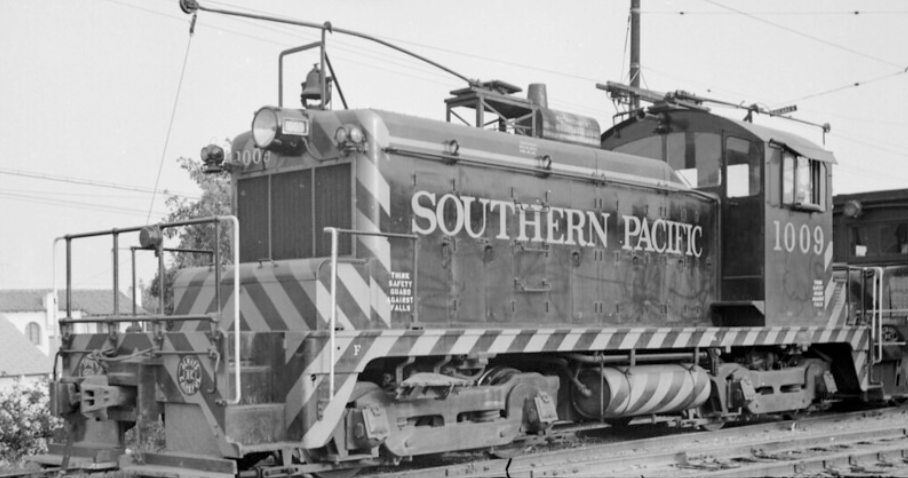Pacific Electric
Pacific Electric #418 at Orange Empire RR Museum on 14 June 2008 (John Smatlak photo) | |||||
|---|---|---|---|---|---|
|
For decades, Pacific Eastern had been North America's largest electrified interurban. It's
not surprising then that the Southern California company's freight hauler roster mirrored
the development of the electric locomotive, from the late 1890s to the latter part of the
1940s. PE's electric-powered roster was like none other of its day; the 500-mile interurban
employed a unique mix of box cab, light-weight box motor, express freight motors, gas electric,
steeple-cab and even diesel locomotives with trolley poles. All of that notwithstanding, the
standard-gauge operation was still noted best for its fleet of "Big Red Cars," and their
contribution to the growth and development of Greater Los Angeles.
There is another aspect of the Pacific Electric that is worth a short discussion. More than
half (29) of PE's electric locomotive roster were home-build by the railway line itself
or by one of the two interurban lines acquired through merger in 1911; those companies
included Los Angeles Pacific and the Los Angeles & Redondo. When Pacific Electric ceased
all electric operation four decades later. Much of the remaining equipment which was still
in good working condition was sold to rail lines in other countries.
It's this unique character that makes the Pacific Electric so interesting, as well as an
ideal segway in to next month's discussion of other types of electric motors. |
|||||
* * * Photo Portfolio * * *
Pacific Electric's freight business got its start just prior to the close of the 1890s and flourished for many years -- thanks in part to strategic acquisions of other area interurban lines in 1911. The 1400/1500 series box and express freight motors were at center of that business. Car builders included J.G. Brill, Pullman and American Car & Foundry as well as some company home-builds. Units in this series included all-steel construction along wooden carbodies. (Allan Weeks photo of #1455 courtesy of Pacific Electric Historical Society.) |
The heavier steel-body electrics facilitated Pacific Electric's transition from small parcels to much larger manifests. The increased business also generated a need for more freight motors. PE responded by completely rebuilding some ex-Southern Pacific passenger cars in 1937, including Steel-bodied #1457 and 1458 (pictured above). The two rebuilds lasted until PE pulled the plug on electrification in 1953. (Dave Witty collection, photographer unknown) | ||||||
BLW-Westinghouse built two types of steeple cabs for the Pacific Electric. The first was a pair of 43-ton Class "B" switchers with a 300-hp rating; these light-weights (#1590 & 1591) were delivered in 1920. The trucks on the two "Bs" were shorter than BLW's standard truck and employed 34" wheels rather 38". The railway also purchased eighteen standard 60-ton Class "D" main-line motors with the capability of producing 1000 horsepower each; they carried road numbers 1601-1618 and were built over an eight-year span starting in 1912. The new motors gave PE the means to haul heavy freight and opened new markets for the common carrier. (M.D. McCarter photo / Craig Garver collection) |
Pacific Electric supplemented the Class "D" Baldwin units by building thirteen home-made steeple cabs (#1619-1631) based on a BLW design, but they incorporated General Electric traction motors and apparatus. Entering service in 1924/1925, the newcomers with their all-steel construction were similar to their BLW counterparts in many respects. The primary difference was the PE-built's 3000-lb weight differential due to a larger axle. Both models had a 1200-ton maximum capacity (60 empty cars). The #1624, which was the last PE electric of any type in service, now resides at the Orange Empire RR Museum. (Marty Bernard photo) |
||||||
|
|
||||||
Don Ross has amassed an extraordinary collection of Pacific Electric freight
power on his website (Don's Depot), and four of those images are presented here with
permission. They are (counter clockwise):
| |||||||
|
|
||||||
| Without question, the most notable (and perhaps troublesome) locomotives on the PE roster were two pairs of 1915 and 1929-vintage gas-electric powered units obtained second-hand from Visalia Electric and Northwestern Pacific respectively. Built by General Electric, locos #1501 & 1502 (ex-VE) were prone to breakdowns at the most inopportune occasions. As for the ex-NWPs, #1648 & 1649 were constructed by J.G. Brill Company and were too long to navigate the railway's sharp spurs -- thus they were shortened by 30 feet. The pair never fully functioned to PE's satisfaction due to battery charging and gasoline-carburetion issues. (#1501 photo by xxxxxxx and #1648 photo by M.D. McCarter / Craig Garver collection) | |||||||
|
|
||||||
| It should be note that the trolley poles on diesel units were not intended as auxilary power, but rather as a necessary means to activate wig-wag and track signals in areas where overhead wires still remained, during the railway's multi-year dieselization. The first locomotives to be so equiped were five GE-built 44-tonners delivered in 1943. Other similarly equipped models were a few Baldwin VO-1000 switchers and class 5200 road-switchers, along with some EMD-built SW1s; all of which were leased from parent Southern Pacific. (PE #1653 photo from Don Ross collection; SP #1009 photo from Craig Garver collection) | |||||||
| Trip Down Memory Lane (from Bob Davis of Southern California) | |||||||
|---|---|---|---|---|---|---|---|
| Notes & Credits:
Reference sources:
| |||||||
